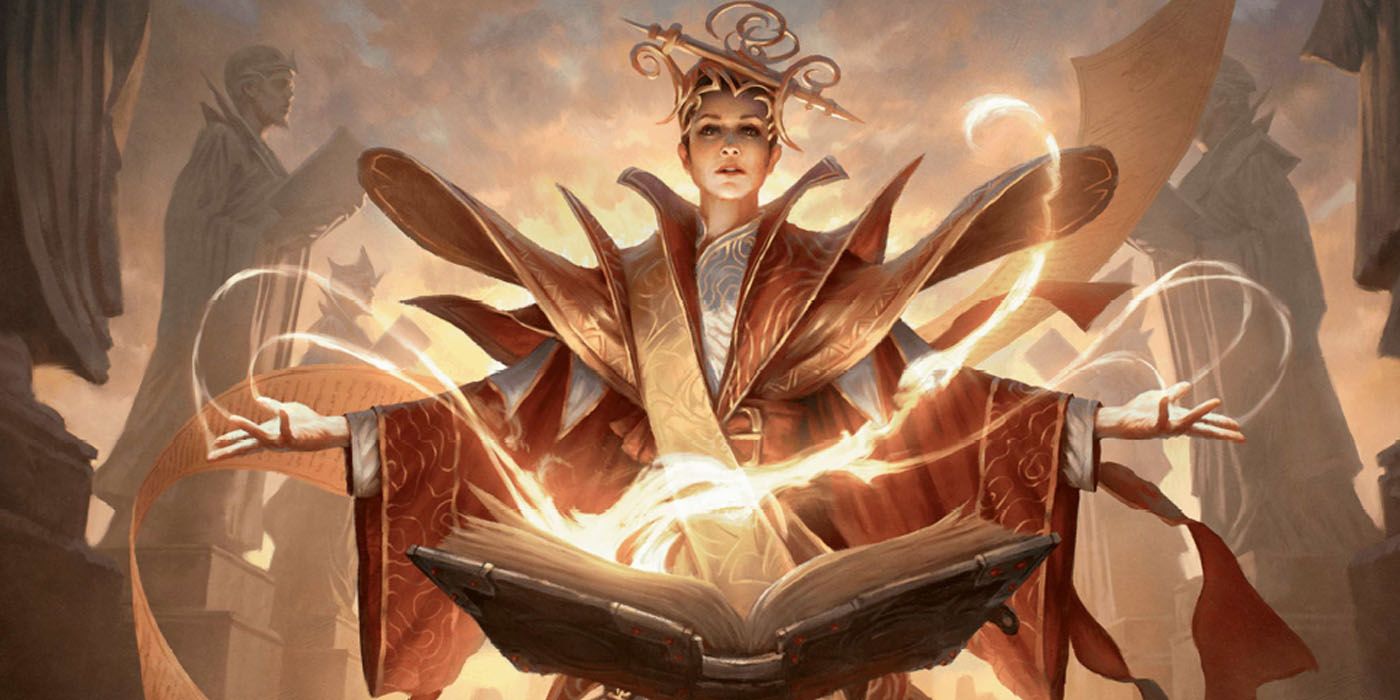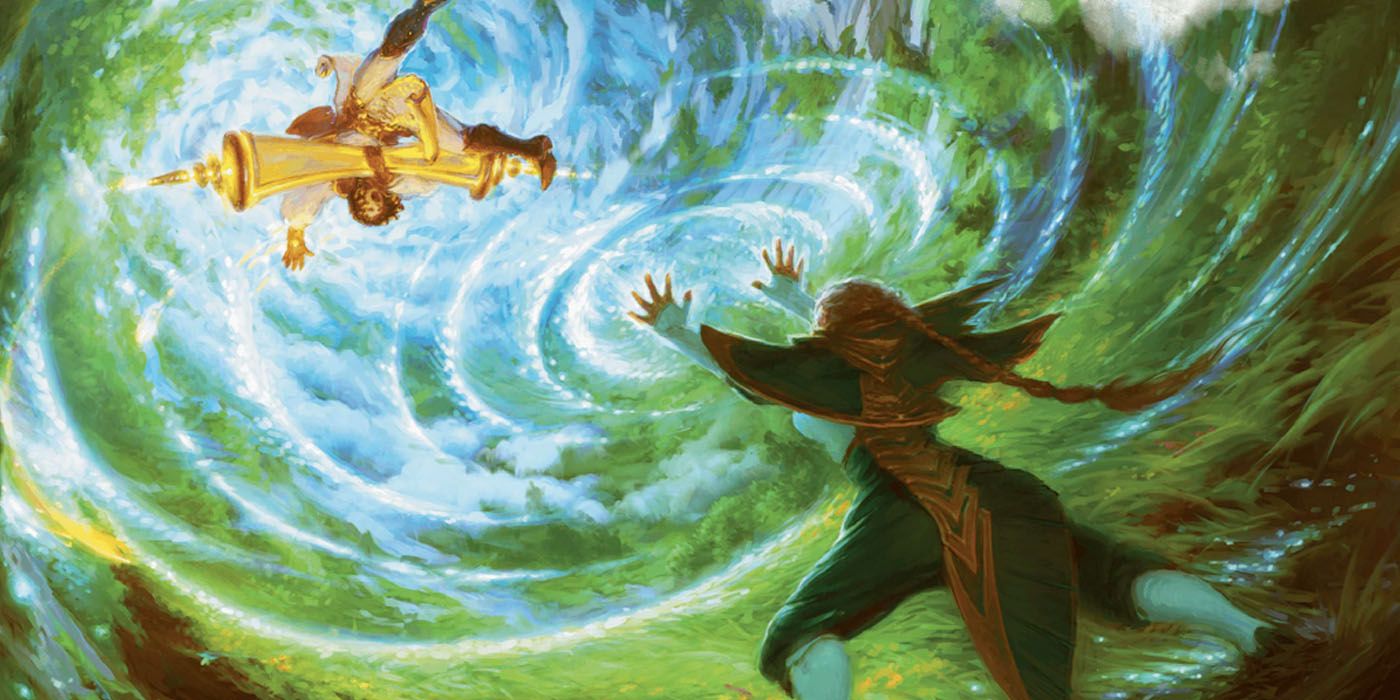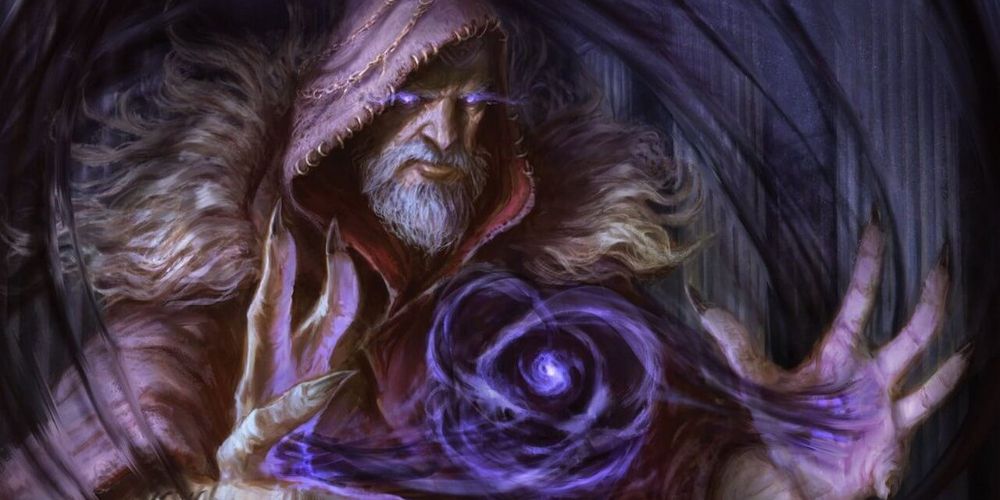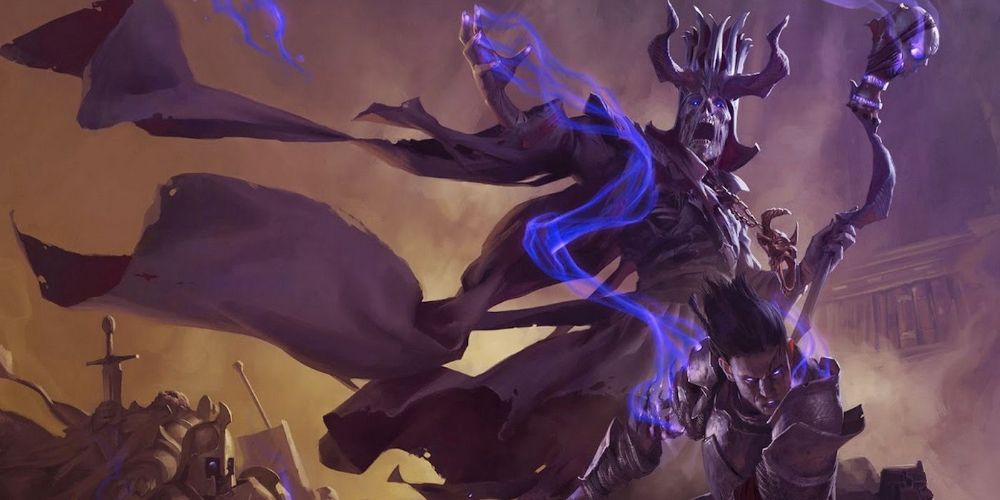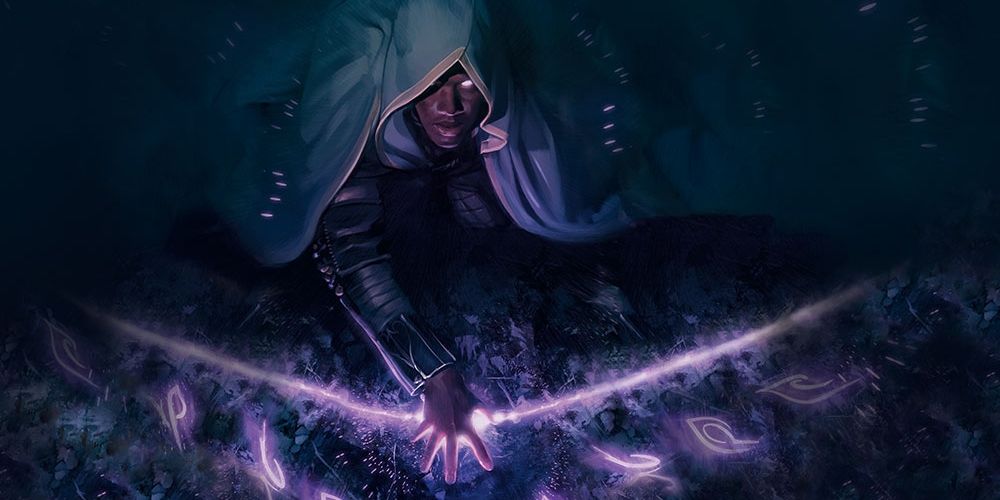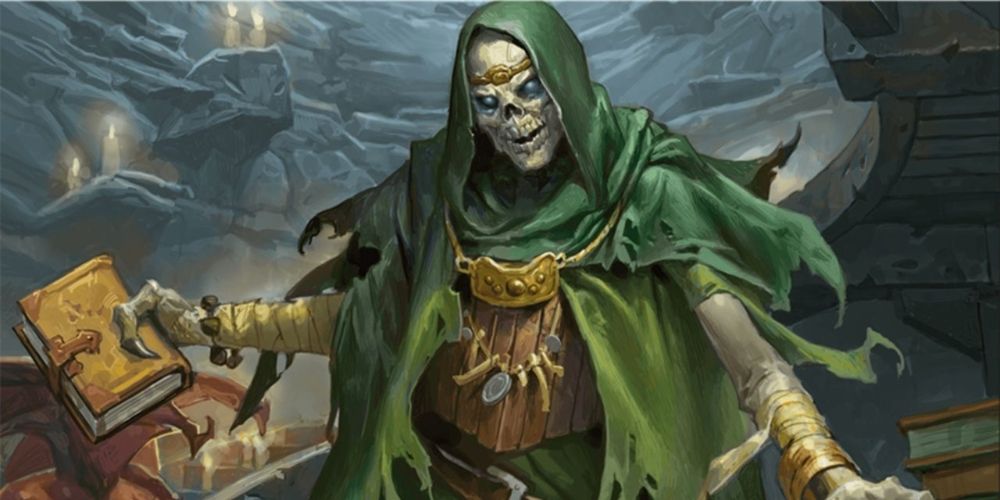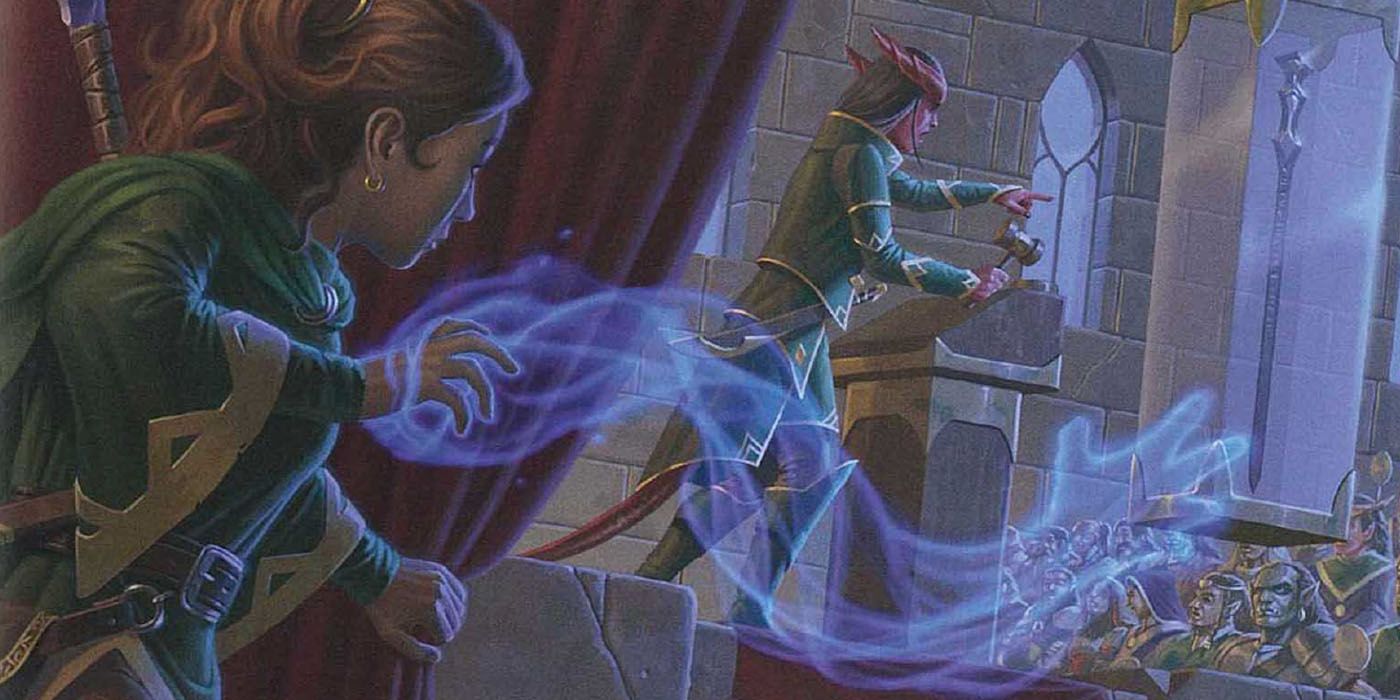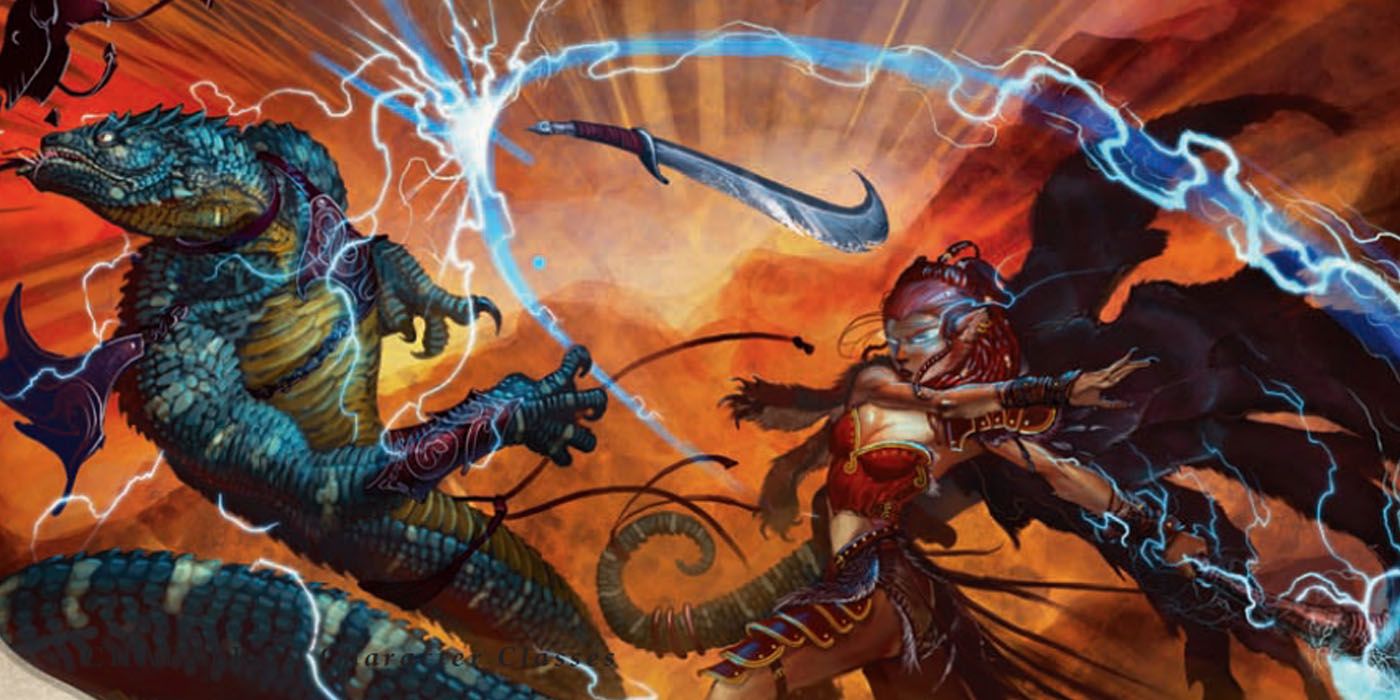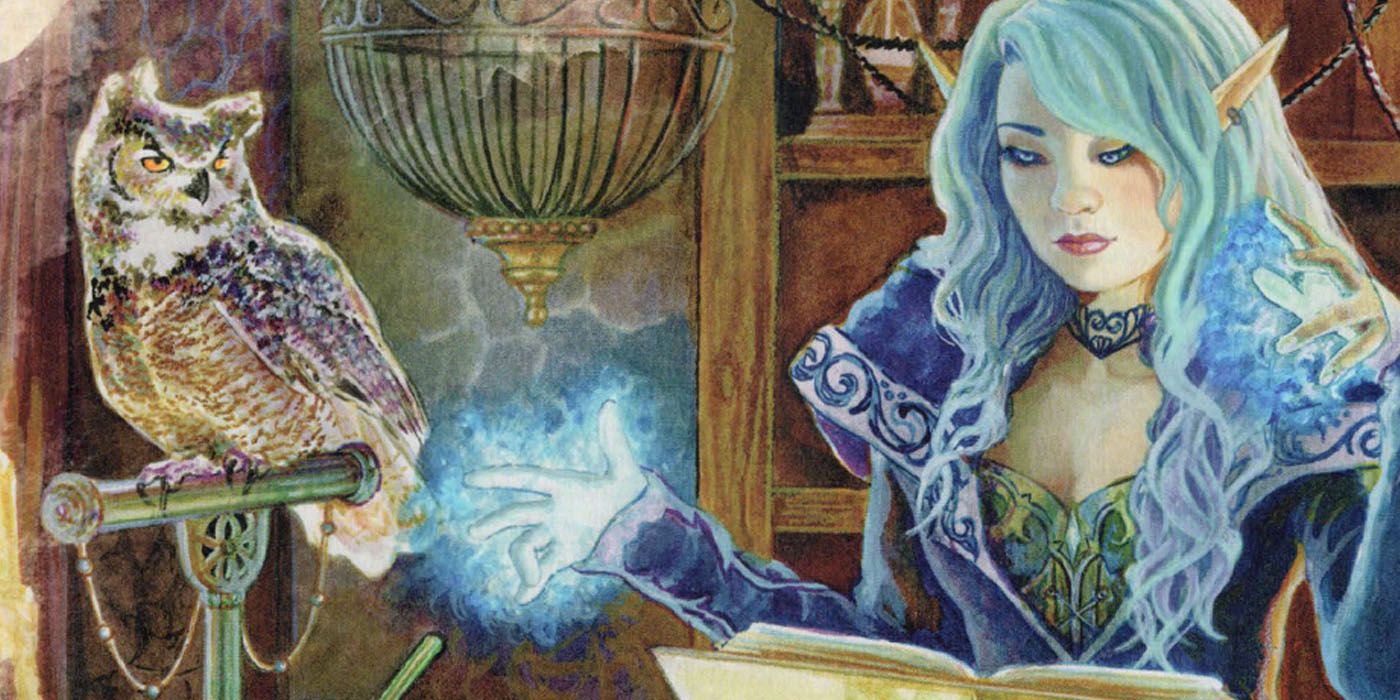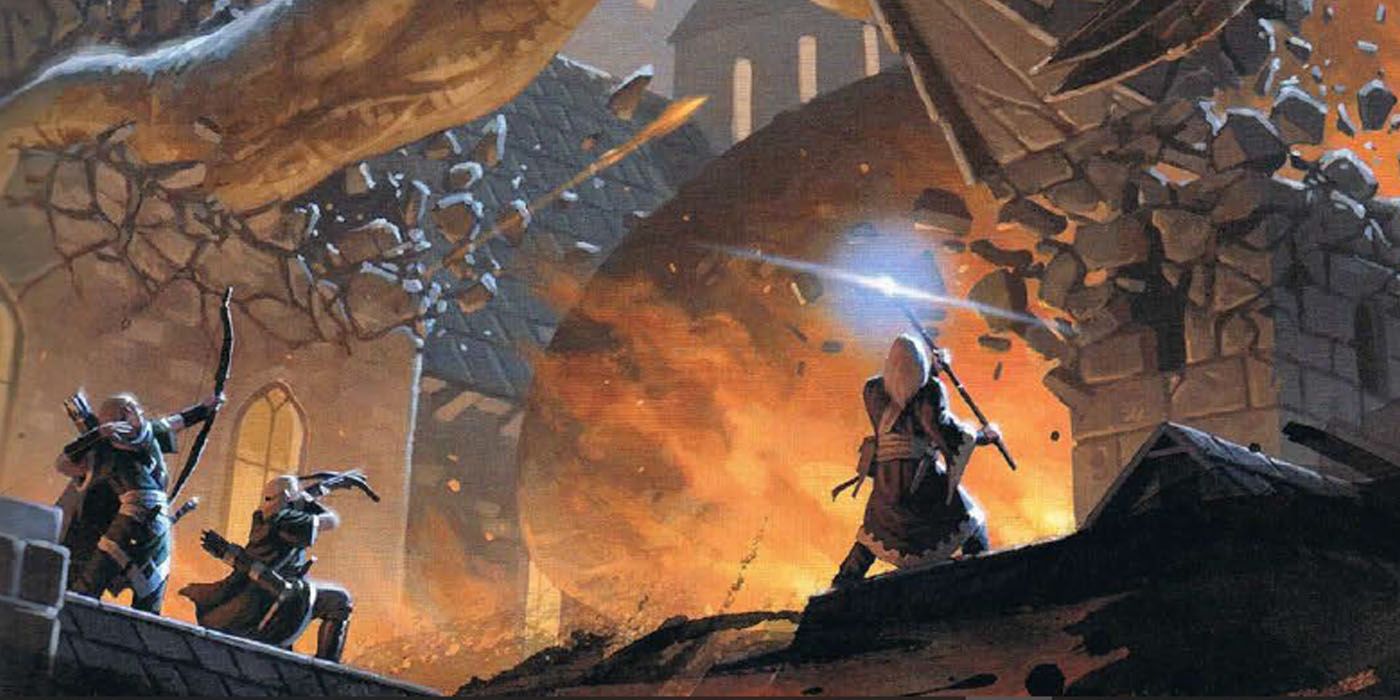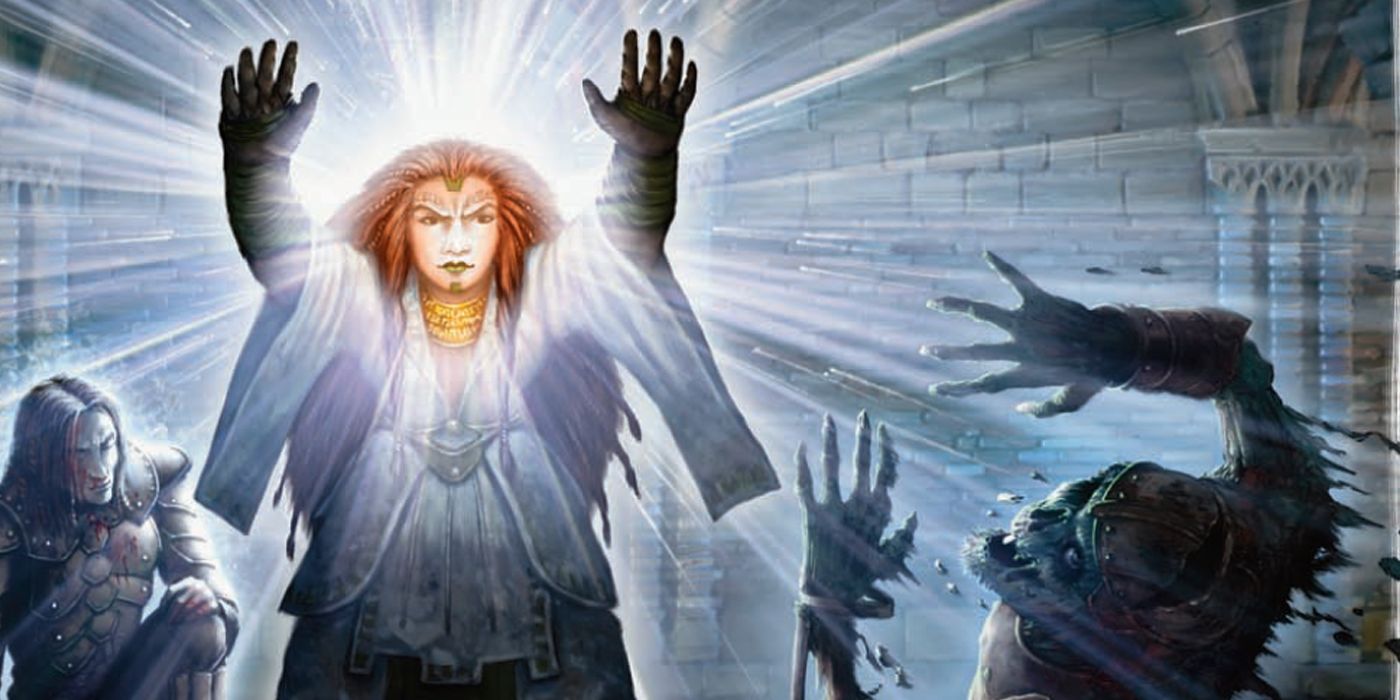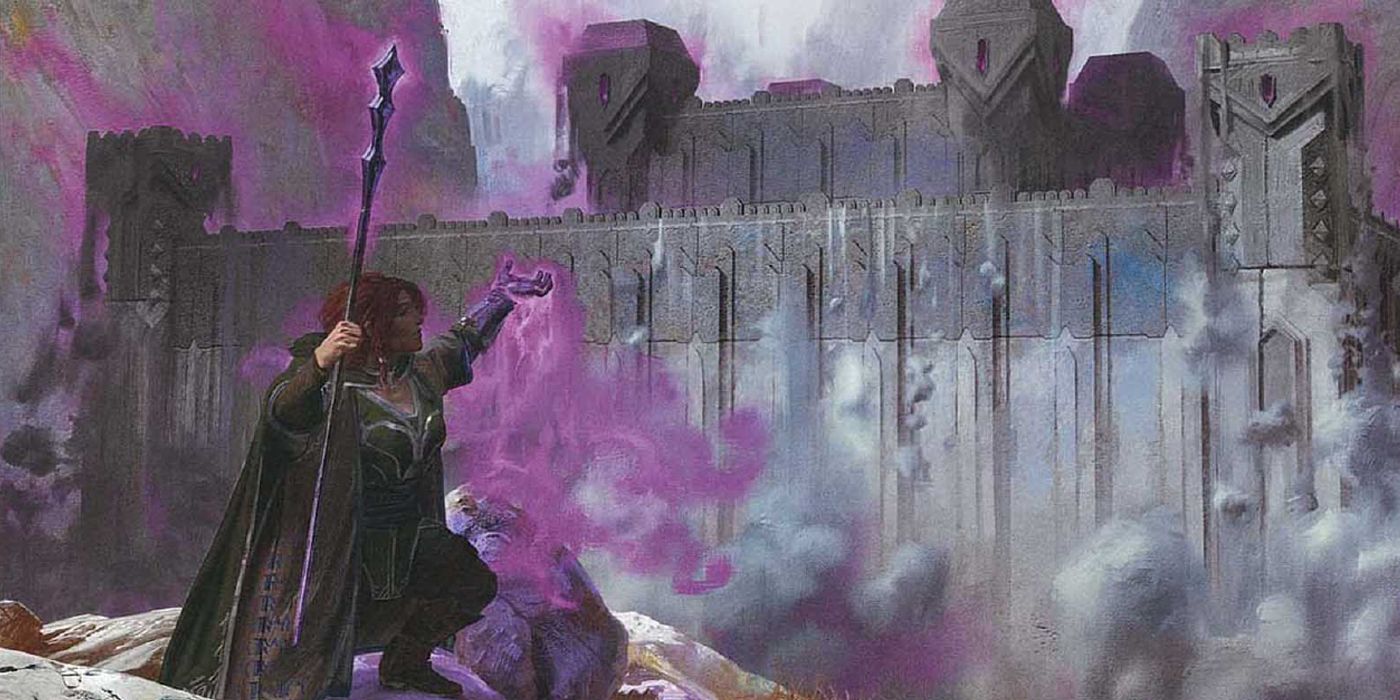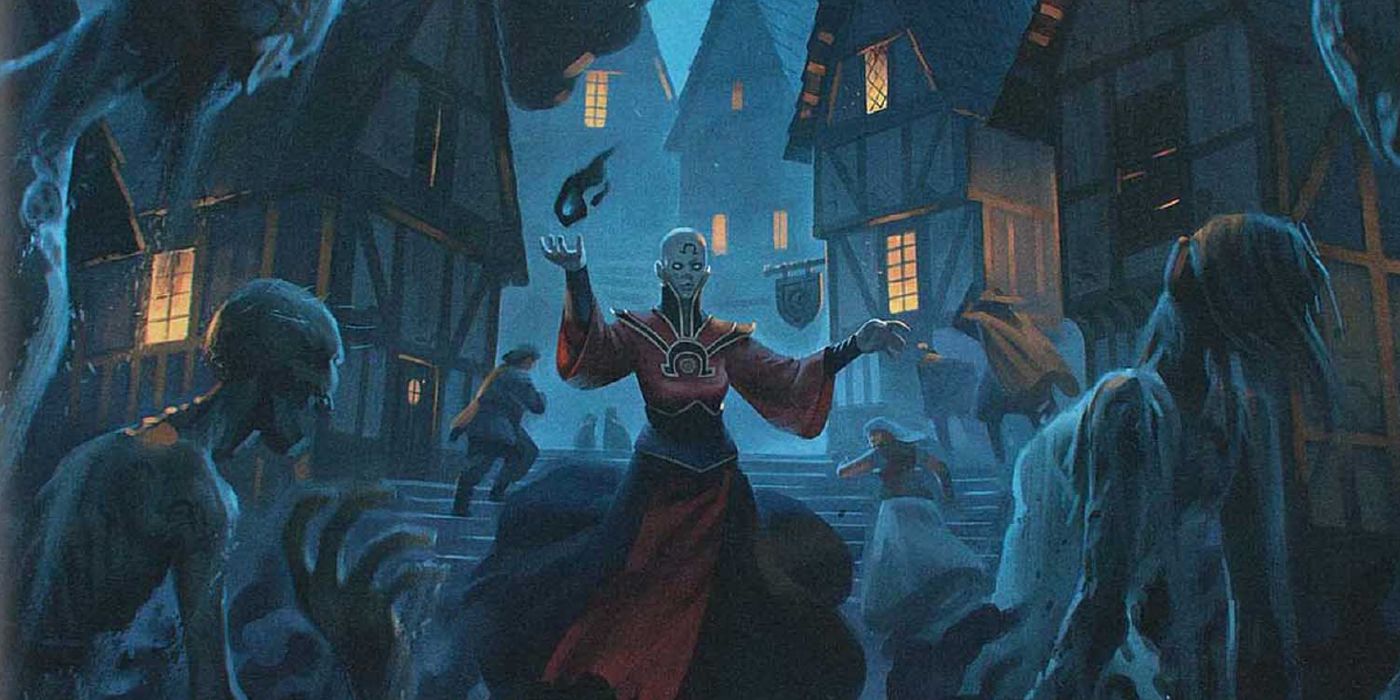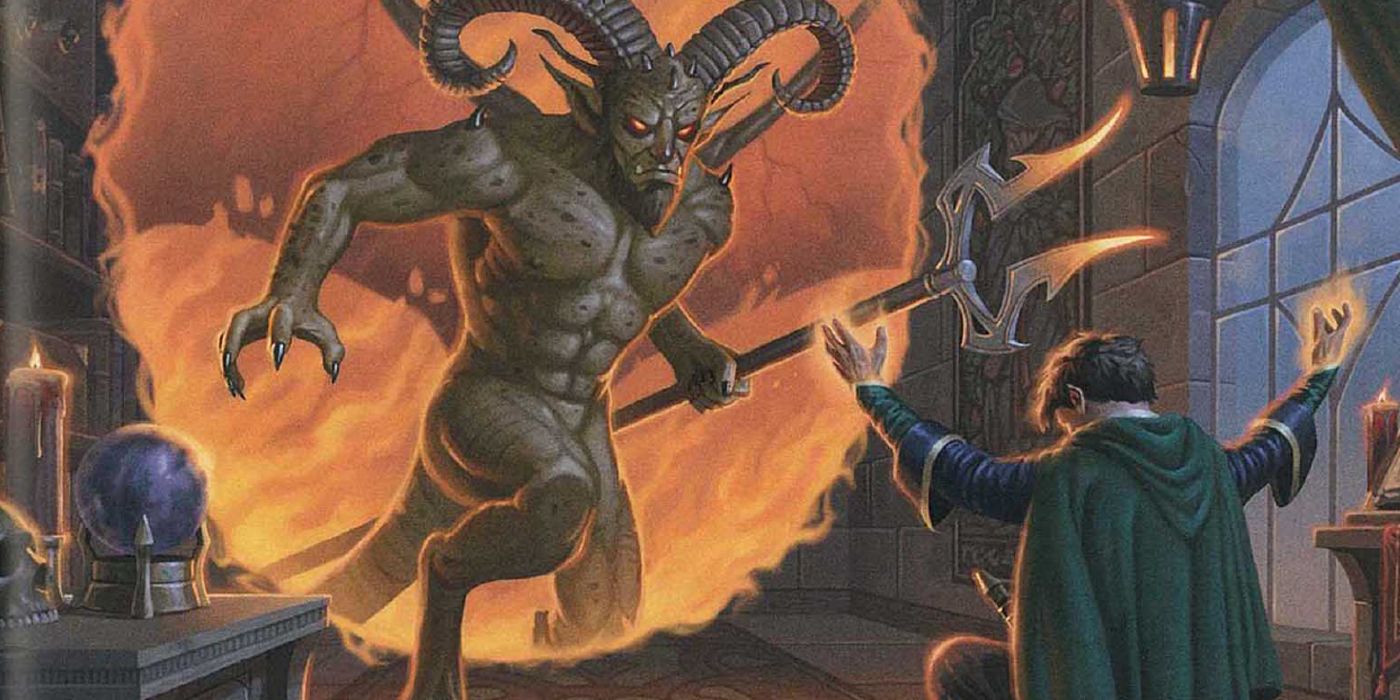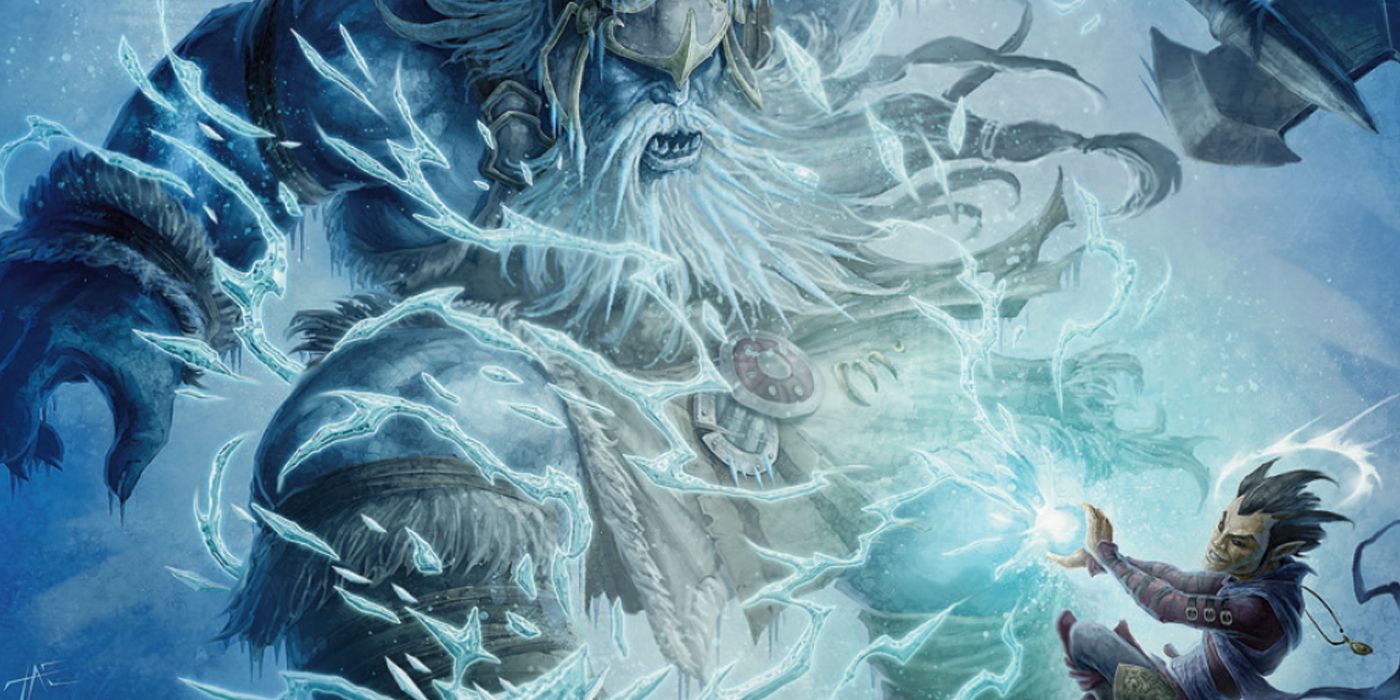Highlights
- Warlocks excel in spell versatility, sharing spells with Druids, Sorcerers, and Wizards for an extensive spell arsenal.
- Building a powerful Warlock requires careful spell selection that balances utility, support for allies, and devastating attacks.
- Must-have spells like Dispel Magic, Thunder Step, and Prestidigitation offer a mix of crowd control, escape options, and deceptive tactics.
As primary spellcasters, Warlocks have one of the widest arrays of available spells in all of Dungeons & Dragons. While Warlocks are unique among spellcasters due to their pact-driven magical abilities, they share many of their spells with Druids, Sorcerers, and Wizards.
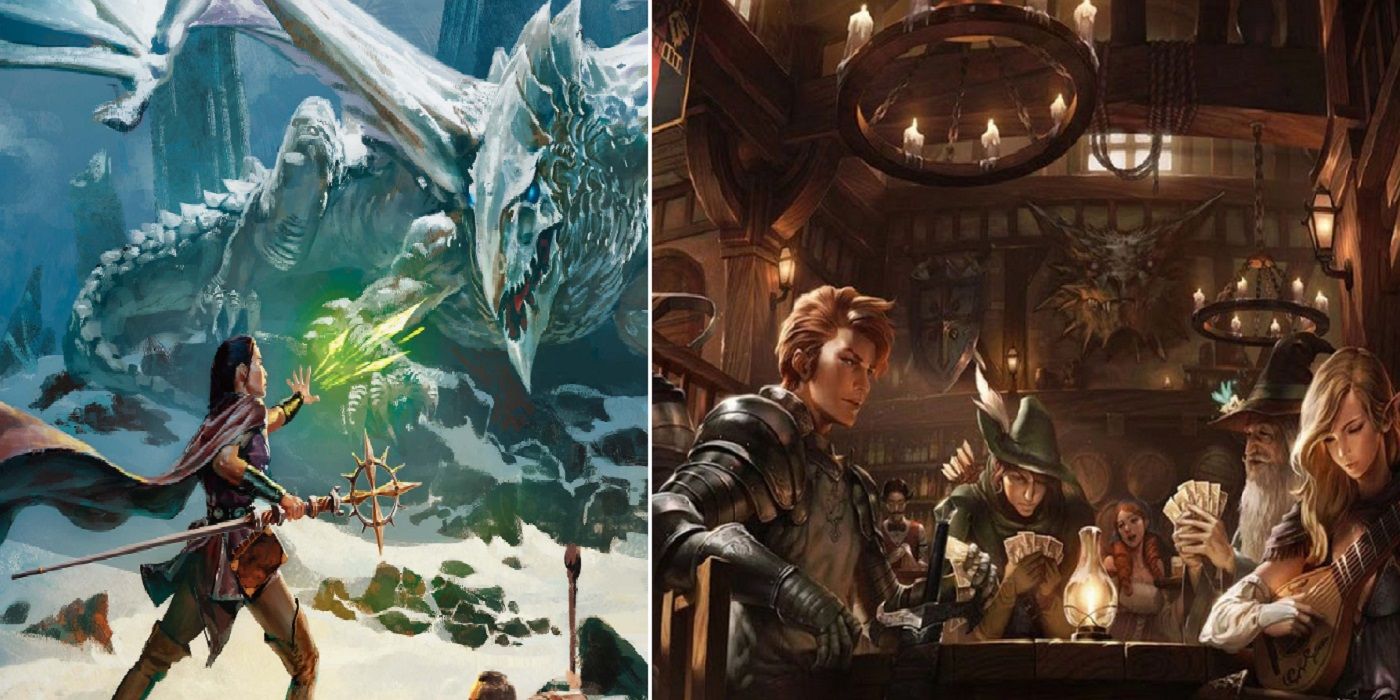
Dungeons & Dragons: 10 Tips For Playing A Half-Elf
From choosing potential variants to knowing the best magical and melee class choices, here are some pointers for D&D fans looking to play a half-elf.
Building the perfect Warlock is a meticulous process, and players may find themselves caught up in preparing the perfect spell list. Many spells may appeal with their flashy, fear-inducing names. However, the best spell output includes those that aid a Warlock and their party and devastate enemies with sly tricks or devilish attacks. For players looking to maximize their character's spellcasting, these are the best Warlock spells in D&D.
Updated April 6, 2024, by Rhenn Taguiam, 2024: With 2024 marking the eventual release of the updated Player’s Handbook in line with the digital push of One D&D, fans of Dungeons & Dragons may be interested in learning how their favorite Classes and builds may be affected by the new changes to the TTRPG’s key mechanics. In the case of the Warlock, players in favor of their characters being supported by patrons may want to pay close attention to Spells they can include in their arsenal to become some of the strongest Spellcasters in the game. Among must-haves and must-tries for Warlocks include the ability to disable spells, a thunderous step, and a nifty illusory skill to both entertain and deceive enemies.
23 Dispel Magic (3rd-Level Abjuration)
Stop A Magical Effect From Happening
Casting Time | 1 Action |
|---|---|
Range | 120 Feet |
Target | 1 Magical Effect, Creature, Object, |
Components | Verbal, Somatic |
Duration | Instantaneous |
Classes | Bard, Cleric, Druid, Paladin, Sorcerer, Warlock, Wizard |
While Counterspell remains a Spellcaster’s go-to option for interrupting a deadly Spell from being cast, a Warlock can expand their Dungeons & Dragons gameplay with Dispel Magic. This 3rd-level Abjuration Spell essentially stops an ongoing magical effect or a magical condition affecting an object or creature.
Similar to Counterspell, Dispel Magic also instantaneously stops a Spell of a 3rd-Level. However, Warlocks who want to extend this effect to other higher-level Spells will have to cast Dispel Magic at the same Spell Slot as the Spell in question.
When To Use Dispel Magic
Despite working similarly to Counterspell, Dispel Magic only works on an existing Spell. This does make Dispel Magic useful when encountering magical traps or even mechanisms inside magical lairs that could be sources of danger to players. While not necessarily practical in combat, Dispel Magic can be a nifty Spell to prepare during exploration - especially when players are about to embark on adventures in dungeons, crypts, or even mysterious locales.
22 Thunder Step (3rd-Level Conjuration)
A Teleport With A Nifty Damage Component
Casting Time | 1 Action |
|---|---|
Range | 90 Feet |
Target | Self |
Components | Verbal |
Duration | Instantaneous |
Classes | Sorcerer, Warlock, Wizard |
Due to how Dungeons & Dragons combat can quickly pit a player’s party against a horde of opponents, mobility Spells remain an integral part of any Spellcaster’s arsenal. Such is what Thunder Step provides, as this 3rd-Level Conjuration Spell acts similarly to Misty Step in how it instantly teleports a Spellcaster to a chosen location within 90 feet.
However, unlike Misty Step, Thunder Step lets its users leave with quite a literal bang. When using Thunder Step, users leave a booming noise in their wake where everyone within 10 feet of the Spellcaster’s previous location needs to make a CON Save or else take 3d10 Thunder Damage on a failure. Users may bring objects with them that don’t exceed their weight, as well as another willing creature within 5 feet of them - provided there’s also space in the destination for said creature.
When To Use Thunder Spell
Despite its rather noisy nature, Thunder Spell is quite a useful escape route for a Warlock and a nearby ally should they become the target of other opponents in melee incursions. The 3d10 Thunder Damage (or half on a CON Save) can become a nifty punishment for their pursuers, incentivizing more aggressive plays from their allies that can potentially finish off these foes.
21 Prestidigitation (Transmutation Cantrip)
Fool Enemies With Tricks
Casting Time | 1 Action |
|---|---|
Range | 10 Feet |
Target | (Depends on Effect) |
Components | Verbal, Somatic |
Duration | 1 Hour |
Classes | Bard, Sorcerer, Warlock, Wizard |
As some of the more popular Cantrips in D&D 5e often deal damage or inflict effects on opponents, it makes sense for Prestidigitation to become a bit of a niche Spell among both Warlocks and students of the Transmutation School. When cast, Warlocks can cause one of numerous effects: a harmless sensory effect, lighting or snuffing out a small fire source, cleaning or soiling a 1x1 object, marking an object or surface with a symbol, or creating a hand-sized non-magical trinket or an illusory image. All of these effects can be made to last up to an hour.
What makes Prestidigitation rather interesting is how it allows Warlocks to cause up to three (3) of these effects to happen at the same time, taking an Action to dismiss each one. The option to let up to three Prestidigitation effects occur simultaneously provides a lot of flexibility to Warlocks who want to entertain (or deceive) with illusions.
When To Use Prestidigitation
Despite the mundane nature of these effects, skillful Warlocks can maximize these triggers to aid the party during and outside exploration. For instance, the marking effect enables Warlocks to mark areas in a maze so they don’t get lost. Likewise, they can use Prestidigitation to cause various effects to lure guards away from posts, allowing them to enter areas stealthily. A skillful Warlock may even work with the party’s Rogue or Bard to deceive NPCs, with the Warlock using Prestidigitation behind the scenes to manipulate the environment to “convince” NPCs of the party’s desires.
20 True Polymorph (9th Level Transmutation)
Convert Allies Into Heavy-Hitters, Enemies Into Useless Items
Casting Time | 1 Action |
|---|---|
Range | 30 Feet |
Target | A creature or nonmagical object seen within range |
Components | Verbal, Somatic, Material, (a drop of mercury, a dollop of gum arabic, and a wisp of smoke) |
Duration | Concentration, up to 1 hour |
Classes | Bard, Warlock, Wizard |
Equal parts effective and entertaining, True Polymorph allows the caster to perform transformative magic. The spell's usefulness is divided into two categories: enemy usage and party usage. When used on enemies, the spell can transform creatures into an object, rendering them sufficiently weaker and unable to attack. This could be used to eliminate stronger creatures by turning them into breakable objects.

10 Most Beginner Friendly Classes In Baldur's Gate 3
Some of the easiest classes in Baldur's Gate 3 will help players new to the series and genre have a leg up in the world.
Conversely, the spell can turn fellow party members into strong creatures of the same level. This could be especially helpful for injured party members, as the spell forces them to adopt the HP and stats of the creature they become. This spell is a creative way to simultaneously save an ally, while also giving them the chance to wreak havoc as a ferocious beast.
When To Use True Polymorph
The Spell’s hour-long duration can give players a myriad of options, especially when they consider the depth of their polymorphing capabilities. Should players want to take advantage of the perma-morph after using the Spell for an hour, they can transform anything into a powerful creature like a dragon or do the reverse and cripple an enemy by reducing them to mere objects. In this regard, Warlock players may want to maximize True Polymorph by securing ideal polymorph options in advance, with CR 9 and below should players want to transform objects into pets as well as CR 15 and above for more powerful forms.
19 Psychic Scream (9th Level Enchantment)
INT-Based Stun Almost Guarantees Effect
Casting Time | 1 Action |
|---|---|
Range | 90 Feet |
Target | Up to 10 creatures of choice seen within range |
Components | Somatic |
Duration | Instantaneous |
Classes | Bard, Sorcerer, Warlock, Wizard |
Warlocks wanting to induce serious damage while simultaneously hindering enemies can find everything they want in Psychic Scream. This spell forces victims to succeed on an Intelligence saving throw, or face 14d6 damage and become stunned.
This spell has a high chance of doing maximum damage, given that many monsters tend to have a low Intelligence modifier. What's more, any foe vanquished by Psychic Scream meets an undignified end in the form of having their head explode, making the killing blows all the more satisfying.
When To Use Psychic Scream
Players can skip Psychic Scream’s damage in favor of its powerful stun. Theoretically, weaker-willed enemies can stay stunned for longer as long as they keep on failing their INT Saves. And even then, high Intelligence Scores are a rarity among stronger opponents, which makes Psychic Scream’s 10-target option a useful Spell to cast against the story’s higher-level lieutenants or even assistants of the BBEG.
18 Finger Of Death (7th Level Necromancy)
Guaranteed 30 Damage Makes Spell Safe Against Bosses
Casting Time | 1 Action |
|---|---|
Range | 60 Feet |
Target | A creature seen within range |
Components | Verbal, Somatic |
Duration | Instantaneous |
Classes | Sorcerer, Warlock, Wizard |
For the aspiring Necromancer, look no further than Finger of Death, which combines high damage with shady necromancy. Its targets must attempt a Constitution saving throw; should they fail, they receive 7d8 + 30 necrotic damage (and half if they succeed). Furthermore, humanoids that fall to Finger of Death pop back up as zombies on their next turn and are placed under the caster's control.
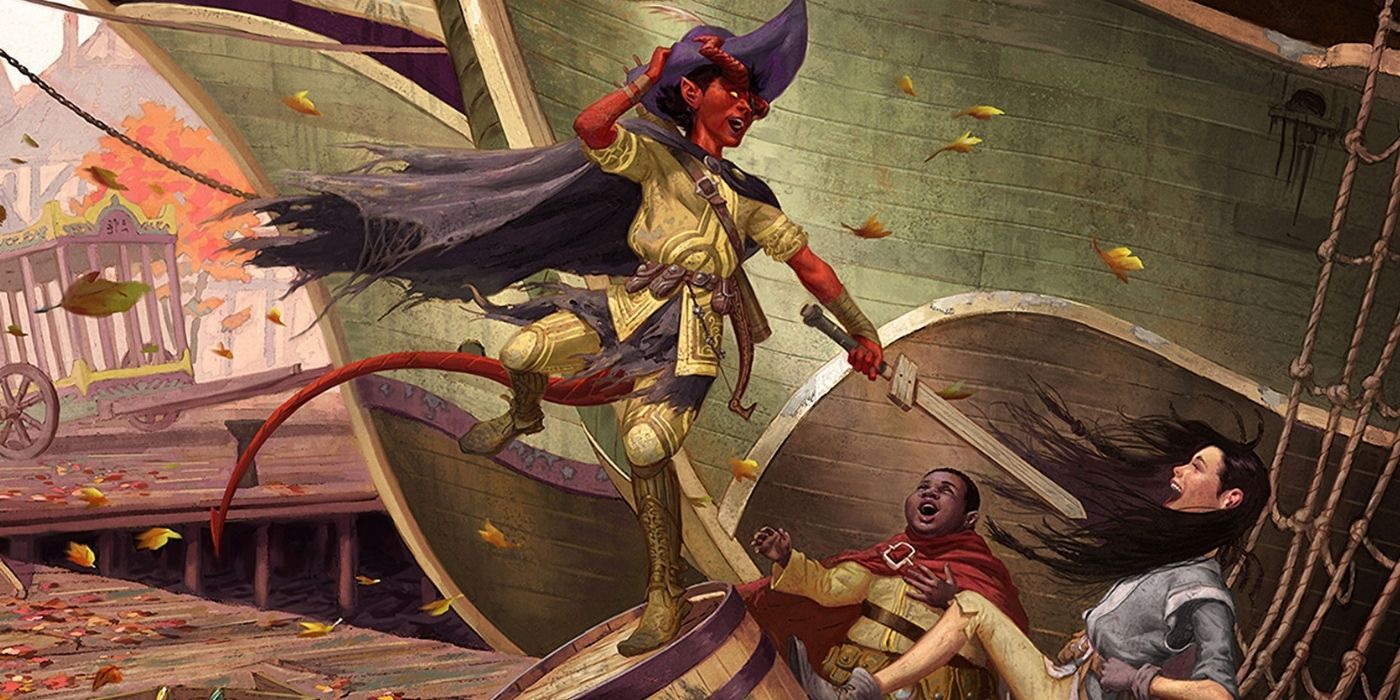
Dungeons and Dragons: What is a Feat Worth?
Feats have taken a backseat in Dungeons and Dragons 5e, leaving many players wondering if they're worth taking at all.
As opposed to Intelligence, Constitution is a bit of a toss-up in terms of whether a creature or humanoid enemy will have a decent Constitution score. Regardless, the additional 30 damage compensates for the potential half damage.
When To Use Finger Of Death
The CON Save requirement for Finger of Death is what makes this Spell avoidable when used against tougher foes. Either way, the guaranteed 30 Damage from the 7d8 Damage pool can still ensure the target enters a world of hurt when the Spell is cast against them. Ideally, players may want to have another ally affect the target with Disadvantages over Saves to ensure Finger of Death has higher efficacy.
17 Plane Shift (7th Level Conjuration)
Teleport And Banishment In One Spell
Casting Time | 1 Action |
|---|---|
Range | Touch |
Target | You and up to 8 willing creatures |
Components | Verbal, Somatic, Material (a forked, metal rod worth at least 250 gp, attuned to a particular plane of existence) |
Duration | Instantaneous |
Classes | Cleric, Druid, Sorcerer, Warlock, Wizard |
For tight situations, Plane Shift is an exceptional spell to have prepared. It completely outshines any other teleportation-based spell, as it can transport entire parties to different planes. While other spells limit companion amounts when teleporting, Plane Shift allows up to eight willing creatures (including willing NPCs) and can be used to shorten travel times between locations.
This spell also has combat potential since it can be used to banish enemies to other planes — reminiscent of the spell Banishment. Unlike Banishment, however, the creature does not return when concentration is broken; they must return to their desired plane themselves.
When To Use Plane Shift
Its high-level nature makes Plane Shift a worthwhile substitute for both Teleport (7th-Level Abjuration) and Banishment (4th-Level Abjuration), with the target being the only difference. Warlocks can simply cast Plane Shift two times to travel from virtually any location across the same plane. Likewise, they can doom an enemy into a faraway plane with a mere casting of this Spell.
16 Maddening Darkness (8th Level Evocation)
Hunger Of Hadar Upgrade With Psychic Damage
Casting Time | 1 Action |
|---|---|
Range | 150 Feet |
Target | A point chosen within range |
Components | Verbal, Material (a drop of pitch mixed with a drop of mercury) |
Duration | Concentration, up to 10 minutes |
Classes | Warlock, Wizard |
One of the prime Warlock strategies is to utilize the Eldritch Invocation Devil's Sight and cast a magical darkness spell. This allows a Warlock full advantage and sight in magical cover. To employ this strategy that all Warlock players should know, Warlocks should prepare Maddening Darkness, which enables them to see 120 feet in all darkness forms.
Unlike Darkness, a lower-level spell of similar properties, Maddening Darkness also induces damage to those caught in the spell's 60-foot-radius sphere. A Wisdom save is required, and those who fail take a full 8d8 damage.
When To Use Maddening Darkness
Essentially an upgrade to Hunger of Hadar, Warlocks are once again advised to have Devil’s Sight prior to procuring this Spell. Instead of using it flexibly like Hunger of Hadar, Maddening Darkness’s 8d8 Psychic Damage to targets that start their turn in the area can motivate Warlocks to transform this Spell into an offensive AOE terrain-based mob killer.
15 Power Word: Kill (9th Level Enchantment)
Guaranteed Kill When Used Correctly
Casting Time | 1 Action |
|---|---|
Range | 60 Feet |
Target | A creature seen within range |
Components | Verbal |
Duration | Instantaneous |
Classes | Bard, Sorcerer, Warlock, Wizard |
With a name as intimidating as Power Word: Kill, it's no surprise that this spell makes the list. The name says it all: the caster says a word and a target dies instantly, making combat almost too easy. The only parameter is that the target must be at 100 hit points or lower to instantly die.
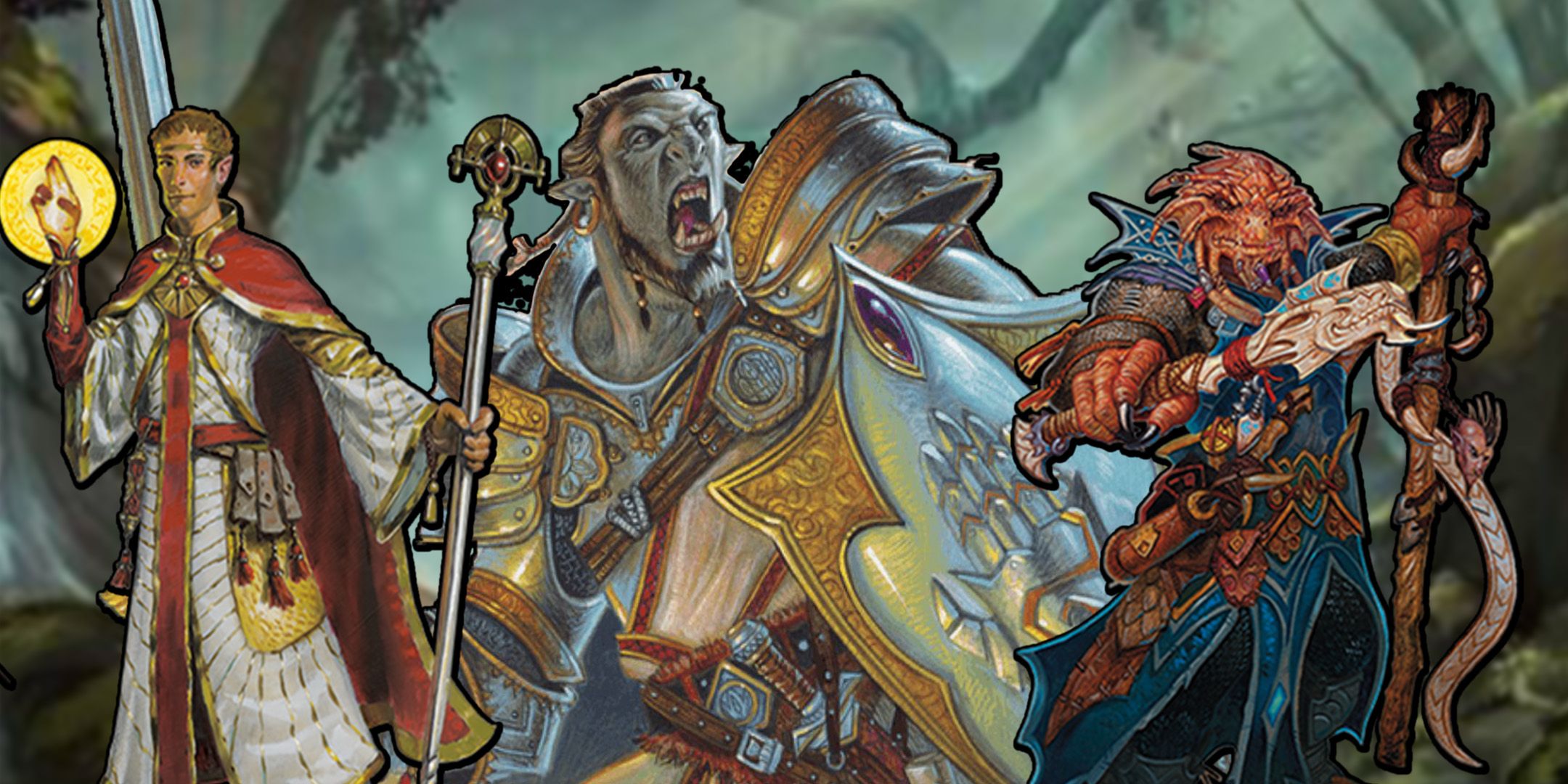
Dungeons & Dragons 5e Best Paladin Builds
Paladins haven't always been the most popular class in Dungeons & Dragons, but they're an amazingly powerful and fun class when done right.
While some might get zealous and attempt this spell right off the bat, a smarter plan is to wait for a few rounds, ensuring a foe is within the correct hit point threshold. Essentially, this spell is a way for a player to spare themselves and their party from unnecessary bloodshed, instantly ending combat and without wasted spell slots or hit points.
When To Use Power Word: Kill
While indeed one of the most powerful Spells in Dungeons & Dragons, Warlocks are either at the risk of using this against a BBEG (Big Bad Evil Guy)-level threat that they can resist its effects, or waste it on a lower-ranking henchman that may not be worth the risk. However, the best-case use of the Spell may very well be finding the best method of “wasting” this Spell Slot in case it fails. Instead of depending on it as a last scenario, Power Word: Kill could become more of a deterrent against powerful foes, especially since using this against a BBEG will force them to likely use their limited pool of Legendary Resistances.
14 Frostbite (Evocation Cantrip)
Disadvantage On Target’s Weapon Attack Can Decrease DPS
Casting Time | 1 Action |
|---|---|
Range | 60 Feet |
Target | A creature seen within range |
Components | Verbal, Somatic |
Duration | Instantaneous |
Classes | Druid, Sorcerer, Warlock Wizard, Artificer |
After its activation, Frostbite will create frost on the target creature that is numbingly cold and hurts. Unless they succeed on a CON Save, the target takes 1d6 Cold Damage and has Disadvantage on their next Attack Roll before its next turn ends.
At its core, the d6-based damage of Frostbite makes it relatively weak for a Cantrip, even for the utility Wizard, and especially for the more aggressive Warlock. However, its different effects make it worthwhile - particularly the imposition of Disadvantage on the target’s next weapon attack. While this feature works through a Constitution Saving Throw, this is still a neat alternative in emergencies.
When To Use Frostbite
Similar to Chill Touch, Frostbite also imposes Disadvantage on the target when they do their next weapon Attack. The D6-based Damage makes Frostbite weaker for a Cantrip, and its CON Save-reliant effect means the ability won’t be as efficient against tougher foes. However, an ally who can impose Disadvantage on Saves can help Frostbite secure its Attack Disadvantage, especially when the target is a heavy-hitter like a sub-boss.
13 Mage Hand (Conjuration Cantrip)
Can Bypass Touch-Based Traps
Casting Time | 1 Action |
|---|---|
Range | 30 Feet |
Target | A point within range |
Components | Verbal, Somatic |
Duration | 1 Minute |
Classes | Artificer, Bard, Sorcerer, Warlock, Wizard |
Considered an iconic Cantrip in Dungeons & Dragons, Mage Hand is easily a go-to Spell even for a Warlock. When cast, this releases a floating spectral hand towards the point of the player’s choosing. Throughout the entire minute, players can manipulate the spectral hand as they wish. The only exceptions here are to force the hand to activate Magic Items, make attacks, or carry more than 10 pounds.
Given how deceptive a lot of environments are in Dungeons & Dragons gameplay, being able to hold and use objects safely can become a lifesaver for Warlocks. This is especially the case in highly hostile environments, where things surrounded or coated with weird substances could be potentially lethal to the Warlock who doesn’t ordinarily have a high Constitution.
When To Use Mage Hand
Being able to interact with objects at a distance can become a safety net when exploring unknown environments. When faced with a potentially hazardous task such as interacting with levers and doors, casting Mage Hand to do the heavy lifting can help avoid putting the Warlock in unnecessary peril.
12 Chill Touch (Necromancy Cantrip)
Anti-Healing Can Help Against Enemy Healers
Casting Time | 1 Action |
|---|---|
Range | 120 Feet |
Target | A creature within range |
Components | Verbal, Somatic |
Duration | 1 Round |
Classes | Sorcerer, Warlock, Wizard |
Interestingly enough, Chill Touch doesn’t necessarily need players to touch the hand of their target physically. Instead, this Spell releases a skeletal yet ghostly hand within the space of their target, which then “attacks” the target with the chill of undeath. When hit, the target receives 1d8 Necrotic Damage which they can’t regain until the start of the player’s next turn. They also receive a Disadvantage on Attack Rolls against the player until the end of their next turn.
Although Chill Touch possesses the same range but less damage than the punchier Fire Bolt, the former has more effects that the Warlock should consider when preparing their Spells before their Level 20 D&D experience. For instance, Necrotic damage isn’t easily resisted by most creatures, and the inability to gain Hit Points until the start of the next turn can be debilitating for enemies who need healing. Moreover, being able to impose a Disadvantage to the following Attack Roll on Undead targets is a neat additional effect. However, players may want to be careful using this against them as some Undead can resist Necrotic damage.
When To Use Chill Touch
Despite lacking the same damage as a traditional Fire Bolt, disabling healing for a turn and imposing Disadvantage on the target’s next Attack if it’s an Undead can make this a decent substitute for Eldritch Blast. Its anti-healing property can make Chill Touch ideal against enemies with proven regeneration abilities.
11 Minor Illusion (Conjuration Cantrip)
Versatile Illusions For Different Situations
Casting Time | 1 Action |
|---|---|
Range | 30 Feet |
Target | An object within range, a 5-foot Cube |
Components | Somatic, Material |
Duration | 1 Minute |
Classes | Bard, Sorcerer, Warlock, Wizard |
When cast, Minor Illusion allows the Warlock to create the image or sound of an object within a five-foot cube. The illusion lasts for a minute, which is a considerably long time for almost any party, depending on their intention. When used properly, Minor Illusion in the D&D 5e School of Illusion could easily allow a group to conduct a heist or even go around locations with guards without detection.

Dungeons & Dragons: 5 Skills Every Ranger Should Know (& 5 To Avoid)
Rangers are a key part of any Dungeons & Dragons party, but, while some of their skills are absolutely vital, others are fairly useless.
The innately high Charisma of the Warlock makes Minor Illusion a nifty deceptive Spell, especially in social situations. The five-foot cube is already large enough to create a place for sneaking or to fool opponents from afar, provided they don’t see the Warlock casting the illusion.
When To Use Minor Illusion
Despite its size, a five-foot cube should be large enough to create a myriad of effects to aid a Warlock in different circumstances. In stealth encounters, a five-foot cube should be enough to conjure cover or be cast far enough to distract opponents. Inside dungeons and enemy territories, Minor Illusion could help disguise Warlocks and their companions as walls and other unimposing background elements.
10 Toll the Dead (Necromancy Cantrip)
Similar Damage To Eldritch Blast Minus Disadvantage When Cast In Melee
Casting Time | 1 Action |
|---|---|
Range | 60 Feet |
Target | A creature seen within range |
Components | Verbal, Somatic |
Duration | Instantaneous |
Classes | Cleric, Warlock, Wizard |
The Warlock needs to point at a target within 60 feet in order to cast Toll the Dead, which then produces the sound of a bell that fills the air around the creature. This isn’t a D&D 5e healing Spell, however, as this actually damages the opponent. Unless the target succeeds a WIS Save, they take 1d8 Necrotic Damage or 1d12 Necrotic Damage if they’re missing any Hit Points prior to the Spell’s casting.
Considering how most enemies will likely lose Hit Points in the encounter, a Cantrip like Toll the Dead is a decent way of dealing a guaranteed 1d12 Necrotic damage. Moreover, compared to the likes of Poison Spray which relies on Constitution Saves, Toll the Dead forces a Wisdom Save instead.
When To Use Toll The Dead
Despite Agonizing Blast elevating the damage of Eldritch Blast, the iconic Warlock Spell does suffer Disadvantage at close range. Toll the Dead boasts similar damage numbers but without the melee Disadvantage, and its requirement of uncommon WIS Saves makes this Cantrip a decent substitute to the Warlock staple should Eldritch Blast prove ineffective against foes.
9 Mind Sliver (Enchantment Cantrip)
Verbal Casting, INT Save Can Increase Hit Chance
Casting Time | 1 Action |
|---|---|
Range | 60 Feet |
Target | A creature seen within range |
Components | Verbal |
Duration | 1 Round |
Classes | Sorcerer, Warlock, Wizard (all optional) |
Courtesy of Tasha’s Cauldron of Everything, Mind Sliver (Enchantment Cantrip) becomes a handy addition to any Warlock’s arsenal of Cantrips. When cast, Mind Sliver sends a disorienting spike of psychic energy to one visible creature within 60 feet. That target needs to succeed on an Intelligence Save or suffer 1d6 Psychic Damage on top of a 1d4 penalty to its next Saving Throw.
Despite its low damage output, Mind Sliver can become a staple damaging Cantrip for Warlocks. Most creatures - especially melee fighters - usually have low Intelligence, making them very vulnerable against Mind Sliver. And with its Saving Throw penalty, Mind Sliver can help set up devastating combos from other party members.
When To Use Mind Sliver
Mind Sliver working on an INT Save can make it one of the most efficient Cantrips in the game, regardless of its middling damage. Moreover, its functionality as a Verbal-based Spell means a Warlock can unleash the Cantrip even when tied up. The additional effect of Mind Sliver imposing Disadvantage on the next Save makes this Cantrip a decent prerequisite for big attacks such as Fireball.
8 Darkness (2nd Level Evocation)
Few Counters To Magical Darkness
Casting Time | 1 Action |
|---|---|
Range | 60 Feet |
Target | A point chosen within range |
Components | Verbal, Material |
Duration | Concentration, up to 10 minutes |
Classes | Sorcerer, Warlock, Wizard |
Warlocks tap into living darkness courtesy of the Darkness (2nd Level Evocation) Spell. When cast, magical darkness will fill a 15-foot radius sphere within 60 feet of them. Only nonmagical light can illuminate this area, and even darkvision can’t see inside this region.
Given the overwhelming value of light and vision in D&D, Darkness easily becomes a great counter against Spellcasters who rely on sight. When cast upon an object, the 15-foot sphere of darkness will also move with the object until said object is covered. Likewise, Darkness can dispel any light-creating Spell provided the said Spell is 2nd-level or lower.
When To Use Darkness
Thanks to Devil’s Sight (Eldritch Invocation), Warlocks can gain the uncanny advantage of seeing through magical darkness, making the Class perhaps the only ones in the game able to do this feat. In turn, being able to cast Darkness to debilitate enemy attacks can provide an immense tactical Advantage to the party, especially when overwhelmed by a powerful foe. Warlocks who plan on using Darkness to disable enemy attacks should get Devil’s Sight first, which should allow them to counter-attack after blinding their foes.
7 Hunger Of Hadar (3rd Level Conjuration)
Blindness And Slows Can Pave Way To Attacks
Casting Time | 1 action |
|---|---|
Range | 150 Feet |
Target | A point within range |
Components | Verbal, Somatic, Material (a pickled octopus tentacle) |
Duration | Concentration, up to 1 minute |
Classes | Warlock |
An angry enough Warlock character can impose the same horrors they experience on an unfortunate victim. With Hunger of Hadar (3rd Level Conjuration), a Warlock opens a gateway to unknown horrors that manifests as a sphere with a 20-foot radius. For an entire minute, anyone within 30 feet of the sphere can hear slurps and maddening whispers. And the unfortunate souls left in the actual sphere remain blinded, with no light being able to illuminate the region.
The area affected by Hunger of Hadar immediately becomes difficult terrain. Moreover, creatures that start their turn in the sphere take 2d6 Cold Damage. Likewise, creatures ending their turn in the region need to succeed in a Dexterity Save or take 2d6 Acid Damage. Warlocks in tight situations can rely on Hunger of Hadar as a means to stop enemy advancement.
When To Use Hunger Of Hadar
While its damage is decent, Hunger of Hadar’s true efficiency lies in the horrors of its AOE effects. Transforming its immediate area into difficult terrain and Blinding affected targets can leave them vulnerable to the rest of the players. A Warlock can use this in enclosed spaces to lock enemies in a certain location, using this opportunity to either run or execute a counterattack.
6 Summon Undead (3rd Level Necromancy)
Versatile Undead Summons Can Help Party Numbers
Casting Time | 1 Action |
|---|---|
Range | 90 Feet |
Target | An unoccupied space seen within range |
Components | Verbal, Somatic, Material (a gilded skull worth at least 300 gp) |
Duration | Concentration, up to 1 hour |
Classes | Warlock, Wizard (all optional) |
A key Spell for any necromancer, a Warlock can rely on Summon Undead (3rd Level Necromancy) to call forth assistance from the undeath. When cast, the undead follower can appear Skeletal, Putrid, or Ghostly. Depending on the choice, that Undead can take on unique traits with unique effects. Being a companion to the Warlock, the undead summoned via Summon Undead becomes an extra ally to the Warlock and their companions.
Players stuck in a rut can rely on Summon Undead for extra firepower, especially due to its darkvision and condition immunities. Special properties of the undead can make it useful for scouting missions, fighting bosses, or even overcoming obstacles to objectives.
When To Use Summon Undead
Among the summonable allies of the Warlock, the Undead gives the Class and the party the best slate of skills. On top of Ghostly Undead being able to fly and do tasks for Warlocks, other Undead available for summoning can cover combat options that the party can’t generally fulfill. Moreover, using summoned Undead as cannon fodder can aid the Warlock and their companions outlast tougher foes.
5 Dispel Magic (3rd-Level Abjuration)
Can Remove Effects Affecting The Target
Casting Time | 1 Action |
|---|---|
Range | 120 Feet |
Target | Any creature, object, or magical effect within range |
Components | Verbal, Somatic |
Duration | Instantaneous |
Classes | Artificer, Bard, Cleric, Druid, Paladin, Sorcerer, Warlock, Wizard |
Anyone who’s ever played a Spellcaster knows how pesky a counterspell could be. And a well-timed Dispel Magic (3rd Level Abjuration) can easily become a lifesaver within any Warlock’s arsenal. When cast, this defensive Spell will instantly interrupt and end a target Spell, provided it's 3rd Level or lower.

Dungeons & Dragons: 10 Must-Try Backgrounds To Create More Creative Characters
It's important to use a great Background when crafting a fun character for your next Dungeons & Dragons session, and here are some of the best.
However, Dispel Magic has the opportunity to end higher-level Spells as well. The casting Warlock will simply need to make an Ability Check using their Spellcasting Ability against 10 + the Spell’s Level. At higher-level Spell Slots, Dispel Magic can end Spells of the level equivalent to the Spell Slot used. With a high enough modifier, Warlocks can dispel most Spells. And against higher-level Spellcasters in endgame campaigns, a Warlock can stop the Big Bad from wiping the entire party.
When To Use Dispel Magic
Despite not being as quick as Counterspell, Dispel Magic remains an essential component in a Warlock’s arsenal for its anti-spell capabilities. Being able to remove effects afflicting a target, be it a creature, an object, or an ongoing Spell, can ensure unobstructed exploration. Moreover, ending effects instantly when cast as a 4th-level Spell (unless the target is affected by a higher-level Spell) can secure the party’s safety against debilitating effects from enemies.
4 Eldritch Blast (Evocation Cantrip)
Staple Warlock Cantrip For Consistent Damage
Casting Time | 1 Action |
|---|---|
Range | 120 Feet |
Target | A creature within range |
Components | Verbal, Somatic |
Duration | Instantaneous |
Classes | Warlock |
Eldritch Blast is the signature Warlock spell and a quintessential Warlock feature, being a cantrip available only to Warlocks. Every Warlock player should treat Eldritch Blast as their best friend. As a cantrip, it requires no spell slots to use, but it still does a tremendous 1d10 force damage.
As with many spells, Eldritch Blast increases in usefulness at higher levels. The number of beams increases by one at levels 5, 11, and 17. With multiple beams, the caster can target multiple enemies at once, solidifying Eldritch Blast as one of the best cantrips for delivering damage and optimizing a Warlock's offensive capabilities.
When To Use Eldritch Blast
Eldritch Blast being a Cantrip makes it a must-use in any combat scenario unless perhaps players are dealing with spellcasters or situations where casting spells is discouraged or rendered useless. While Eldritch Blast isn’t as strong as other offensive Cantrips and higher-level Spells, its cost-free nature gives Warlocks an instant ranged attack without worrying about arrows.


